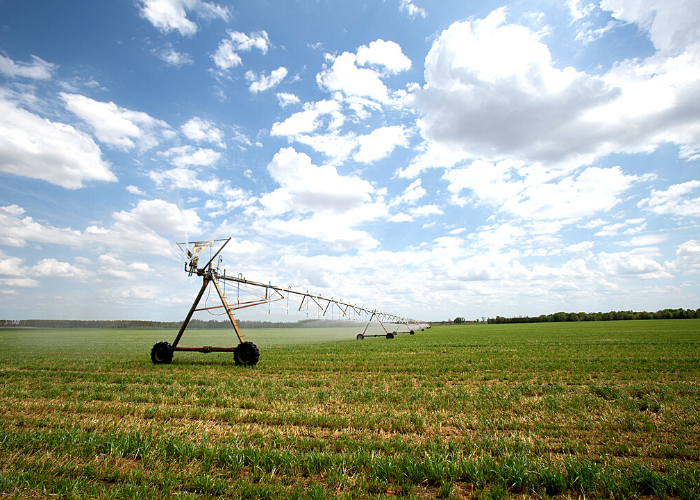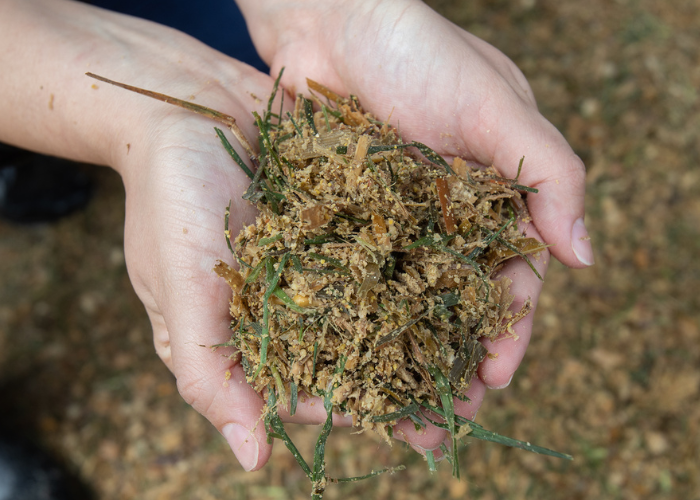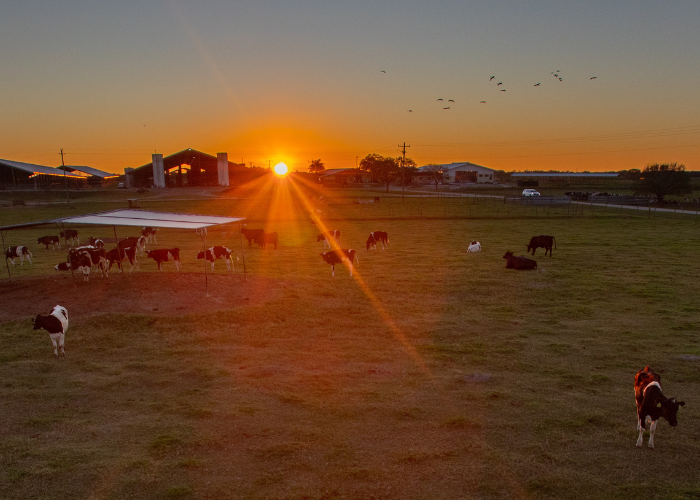Sustainability on Florida Dairy Farms
For Florida’s dairy farmers, sustainability is a way of life. Their livelihood depends on taking care of the cows and land. Every day they strive to use and discover innovative, greener ways to run the farm.
Their efforts are paying off too. Due to innovative practices in cow comfort, improved feed and genetics, and modern barn design, the environmental impact of producing a gallon of milk in 2017 shrunk significantly, requiring 30% less water, using 21% less land and garnering a 19% smaller carbon footprint than in 2007 nationwide.
Water Conservation

Florida’s dairy farmers are experts at conserving and reusing water.
Fresh water is used for cows to drink and to sanitize and clean equipment like milk storage tanks. Wastewater is used to flush manure and excess sand bedding out of the barn, and then separated into solids and the now nutrient-rich water.
Solids, like sand, are washed during the flushing and recycled, used as bedding once again. Nutrient rich water is used to fertilize and irrigate crops where it turns back into wastewater, and the process begins again.
Cow Feed

Dairy cows play an essential role in a sustainable food system. Cows are ruminants, meaning they have four stomachs! Because of their unique digestive systems, they’re able to eat agricultural byproducts that would otherwise end up in landfills like cottonseed hulls and orange peels.
“We’re talking tons and tons of stuff that these other industries would have no use for if it weren’t for the dairy industry,” local dairy farmer, Matt Lussier, said, “Byproducts are huge for dairy farmers.”
Citrus peels and pulp are common byproducts in Florida, a state known for its juice. The leftovers from fruits used to make grapefruit and orange juice are dried and converted into pellet-shaped dairy cow feed that provides a healthy source of energy and calcium for cattle.
They enjoy it too. “Citrus pulp is very palatable,” Lussier said, “That’s one of the main reasons I feed it [to my cows]. You can put the best ingredients in the world in front of a cow but if she doesn’t eat it, it doesn’t do her any good. So you put stuff in that they want to eat.”
Other common byproducts that cows love eating are almond hulls, brewers grains, cotton seeds, distillers grains, and molasses. All of these are delicious and nutritious for the cows and keeps them out of landfills.
The Future of Sustainable Dairy Farming

The future of sustainability in dairy farmers has never looked brighter, and Florida’s dairy farmers are committed to further innovation and going even greener.
Recently, Larson dairy farms in South Florida broke ground on methane digesters by partnering with global-waste solutions provider, Brightmark. The digesters will turn cow manure into renewable natural gas and will generate enough energy to power about 4,000 homes.
Dairy farmers are making changes nationwide too. U.S. dairy farmers are committed to achieving carbon neutrality or better, optimize water usage and improve water quality by 2050 in a nationwide Net Zero Initiative (NZI). They’ll achieve this by making further improvements in feed production, cow care, energy efficiency, and manure management. Partnering with new technologies and science-based research, U.S. dairy farmers are working together to reach these goals.






